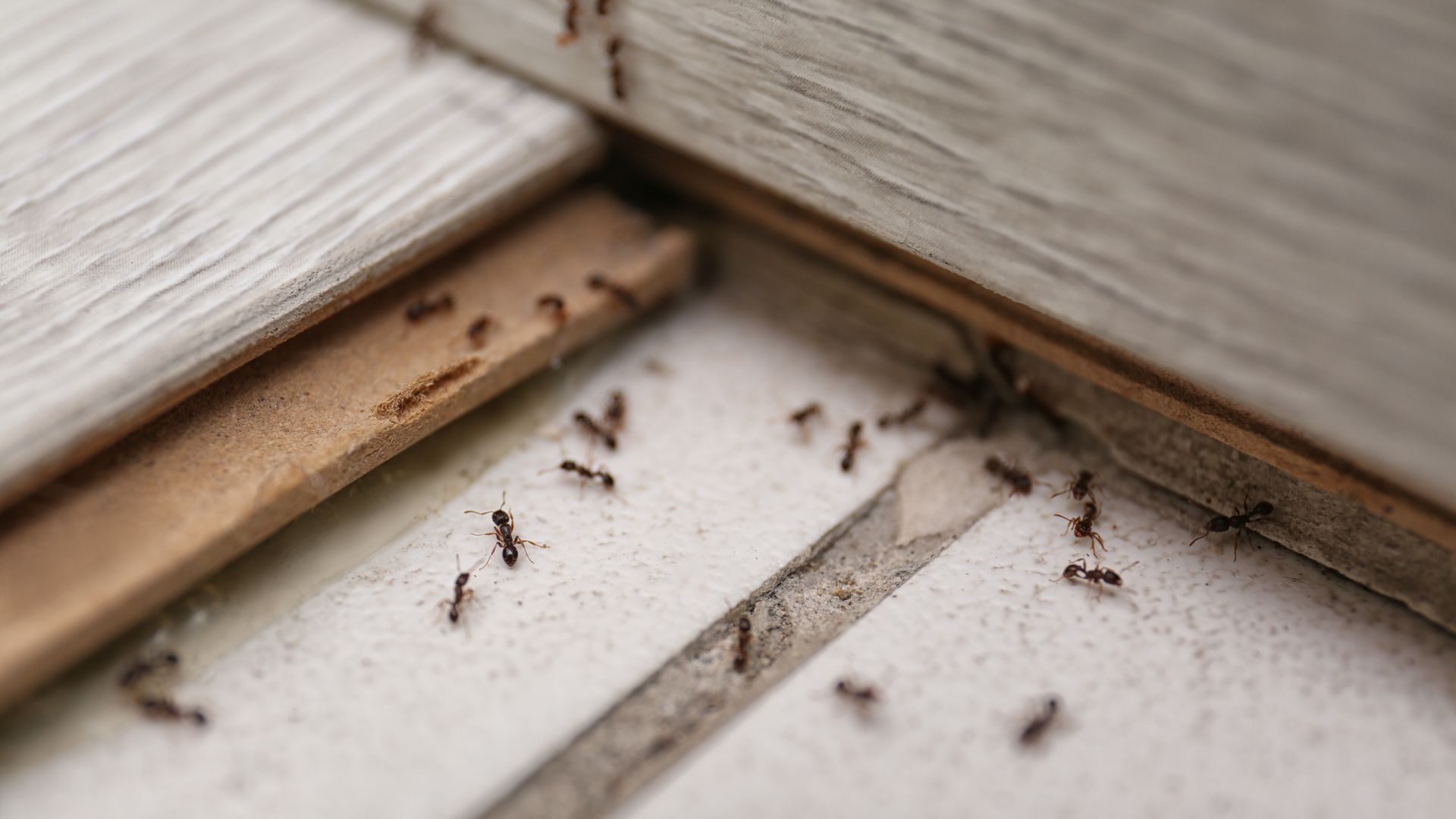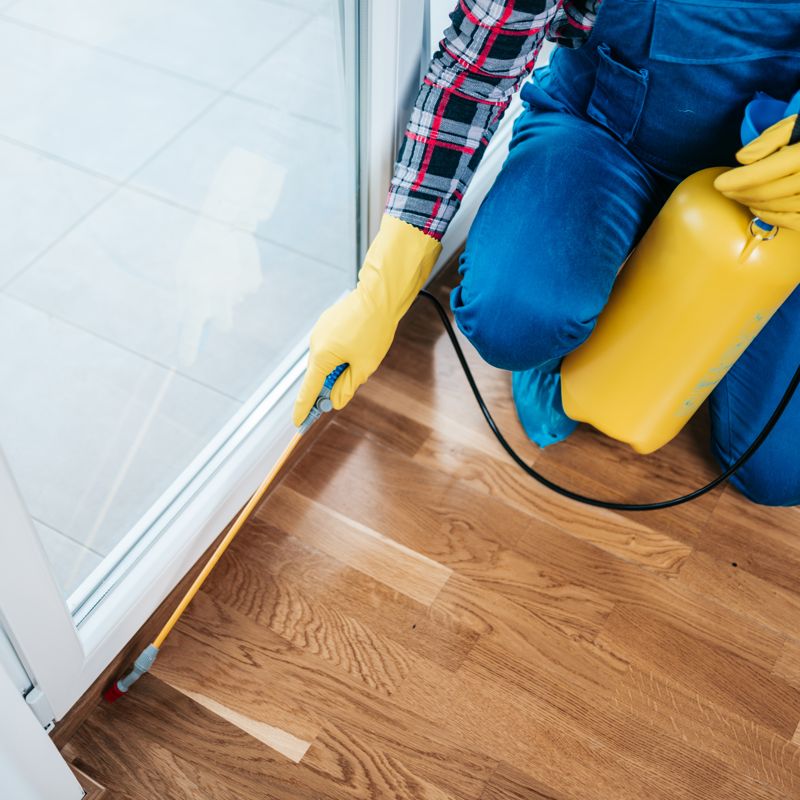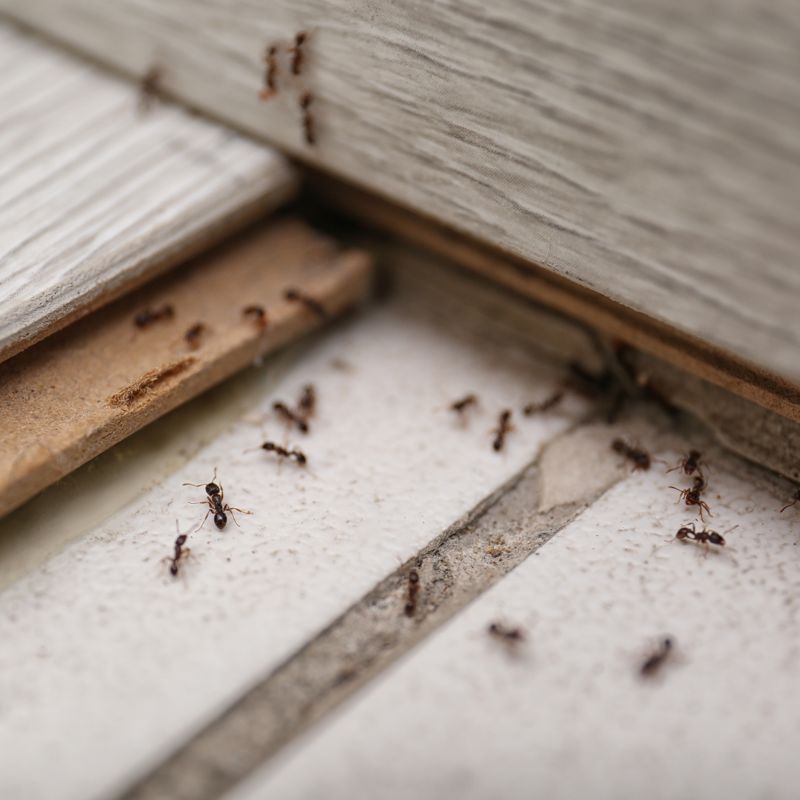
What Is The Best Way To Treat For Termites In Long Island?
While they may be considered a delicacy in certain parts of the world, termites are one pest that should stick to being on the menu and not in your home. For many homeowners, discovering a termite infestation could be the start of losing a lot of time and money – but it doesn't have to.
Here's what Long Island homeowners should know about identifying termites in the area, what problems they cause, what to do if your prevention efforts fail, and how pest control in Long Island has you covered.
Long Island's Termite Identification Guide
While some pests may be solitary, termites are not one of them. In fact, termites live in colonies, which can range from thousands to millions, depending on the type of termite and how long the colony has had time to grow.
What do termites look like? One of the reasons that termites tend to be hard to identify is because they look different based on their position in the colony. Termites live in a caste system, which includes three major groups: worker termites, soldier termites, and reproductive termites.
Worker termites are often at the bottom of the caste and help build the nest and find food sources. Soldier termites tend to be one level above and have large mandibles that they can use to defend the nest or in combat.
At the top of the termite caste system are the reproductive termites, also called alates. Termite colonies may not be able to produce alates for the first few years, but once they do, alates are winged termites that swarm and look for mates. Once they've mated, alates start forming new colonies and branching out.
Of course, you can also identify termites based on the kinds of termites you have. In Long Island, you're most likely to deal with subterranean, drywood, or dampwood termites.
- Subterranean termites: Subterranean termites are the most common type of termite in the country and on Long Island. These termites prefer to live underground and can have coloring that ranges from light brown or cream colored for workers and soldiers to dark brown for alates. Reproductive subterranean termites have wings, but the soldier and worker termites do not.
- Drywood termites: Drywood termites don't need constant access to moisture to survive, and they enjoy making their colonies above-ground in dry wood. These termites have similar variations in coloring and are especially known for their preference for drywall, and soldier termites have large brown heads with armored jaws.
- Dampwood termites: Dampwood termites may grow their colonies more slowly, but they need access to more moisture than any other type of termite. Workers and soldiers look similar to other species, but dampwood reproductive termites are strong fliers and can grow up to half-an-inch in length.
Termites, regardless of type, can sometimes get mistaken for ants. While they may be similar sizes, termites do not have thin waists like ants do. Their antennae are also straight, while ant antennae have a bend to them, and the majority are lighter in color than most ants.
While some pests may be solitary, termites are not one of them. In fact, termites live in colonies, which can range from thousands to millions, depending on the type of termite and how long the colony has had time to grow.
What do termites look like? One of the reasons that termites tend to be hard to identify is because they look different based on their position in the colony. Termites live in a caste system, which includes three major groups: worker termites, soldier termites, and reproductive termites.
Worker termites are often at the bottom of the caste and help build the nest and find food sources. Soldier termites tend to be one level above and have large mandibles that they can use to defend the nest or in combat.
At the top of the termite caste system are the reproductive termites, also called alates. Termite colonies may not be able to produce alates for the first few years, but once they do, alates are winged termites that swarm and look for mates. Once they've mated, alates start forming new colonies and branching out.
Of course, you can also identify termites based on the kinds of termites you have. In Long Island, you're most likely to deal with subterranean, drywood, or dampwood termites.
- Subterranean termites: Subterranean termites are the most common type of termite in the country and on Long Island. These termites prefer to live underground and can have coloring that ranges from light brown or cream colored for workers and soldiers to dark brown for alates. Reproductive subterranean termites have wings, but the soldier and worker termites do not.
- Drywood termites: Drywood termites don't need constant access to moisture to survive, and they enjoy making their colonies above-ground in dry wood. These termites have similar variations in coloring and are especially known for their preference for drywall, and soldier termites have large brown heads with armored jaws.
- Dampwood termites: Dampwood termites may grow their colonies more slowly, but they need access to more moisture than any other type of termite. Workers and soldiers look similar to other species, but dampwood reproductive termites are strong fliers and can grow up to half-an-inch in length.
Termites, regardless of type, can sometimes get mistaken for ants. While they may be similar sizes, termites do not have thin waists like ants do. Their antennae are also straight, while ant antennae have a bend to them, and the majority are lighter in color than most ants.
Three Problems Termites Cause
Are termites dangerous? Many people consider termites to be destructive, but they don't always know the full scope of problems that these wood-destroying pests can cause. With enough time, termites can wreak all kinds of havoc in your home, such as:
1. They Can Be Destructive.
Because termite problems can go unnoticed for three to eight years, these pests have plenty of time to cause structural damage, even if the outward signs aren't completely obvious. Some of the damage termites can cause include:
- Buckling wood in your floors, walls, or ceilings
- Cracks and maze-like tunnels in furniture or walls
- Peeling and damaged drywall paint, which may look similar to water damage
As time goes by, termites can slowly eat away at the wood in your home until you've got hollow walls or floors. It's also not uncommon for termites to destroy antique furniture, especially if it's part-wood.
Subterranean termites, which are the most common in the country, tend to cost more extensive damage since they can go unnoticed for longer periods of time. Drywall termites can cause plenty of damage on their own, but since their presence is harder to hide, homeowners may discover them before they've caused too much structural damage.
2. They Can Spread Mold.
Mold can sometimes show up in homes where wood-destructive pests, like termites, have eaten through the wood. Most termites already enjoy moist and damp environments, which is also an ideal place for mold to grow. It's also easier for mold to grow in places where the wood has decomposed – like a termite-infested home.
As they continue to eat through the wood of your home, active termites may also be introducing moisture and spreading mold as they go. Since mold is a fungus, it can create spores that release into the air of your home.
As time goes on and the problem goes untreated, these mold spores can be a health hazard for you and anyone you live with. You or your family members could experience physical symptoms, like coughing, headaches, and dizziness, as a result.
3. They Can Make Allergies or Asthma Worse.
If you or someone you live with struggles with allergies and asthma, termites can make these symptoms worse. Eating through your wood means that termites are spreading dust into the air, which can wreak havoc on your sinuses.
Termite droppings, also called frass, and saliva won't help either. Not everyone may have an allergic reaction to termites, but termite allergies are not uncommon. And, as the infestation continues to grow and your termites are eating through more wood, the allergies and asthma symptoms will worsen.
What To Do When Your Termite Prevention Efforts Fail
Unfortunately, termites aren't the easiest pest to prevent. These critters feast on cellulose materials, and there are a variety of ways for them to get inside your home. However, there are still a couple of tips you can use to reduce the risk of having termites in your home, such as:
Remove Their Food Sources
Cellulose materials, like cotton, bamboo, or even linen, are all part of a subterranean termite's diet, so you don't want to keep them around. Specifically, it's important to keep cellulose materials out of areas where subterranean termites might find them – like crawlspaces and anywhere near the foundation of your home.
If you do have to use cellulose or wooden siding, try to keep these materials at least six inches away from your foundation or six inches off the ground.
Deal With Excess Moisture
Like any pest, subterranean termites are after your water – especially if it's around the foundation of your home or crawl spaces. You'll need to deal with any excess moisture problems, like leaky pipes or flooded gutters, that may contribute to water pooling near your foundation, in the basement, or in your crawl space.
Deny Access
Besides getting rid of potential attractions, you can also deny subterranean termites access. Wood-to-ground is the most common access point for them, so you'll want to be careful about keeping wood too close to your home.
Sealing any cracks, crevices, or holes near your water and gas lines is another way to deny access to these pests.
Get an Annual Inspection
Since the signs of subterranean termites can go unnoticed for so long, it's never a bad idea to get an annual inspection of your home – a professional will be able to spot the signs of a termite infestation, and if you do have termites, an inspection can help ensure that you catch the infestation early.
However, prevention tips aren't always enough to stop a termite problem. If following the steps above isn't enough to keep these pests away, you'll need to turn to professional termite control – like working with the pros at A&M Quality Pest Control.
Why Every Home Should Be Protected With Termite Control
After discovering a termite problem, some homeowners look for ways to handle the infestation on their own. While DIY methods, like traps, bait stations, or OTC sprays, may look promising, these techniques are rarely effective. They may eliminate some of the infestation, but it's almost impossible for them to kill every single termite, egg, and larvae.
As destructive as termites can be for Long Island homeowners, there's only one foolproof method for getting rid of them: using professional help from A&M Quality Pest Control.
At A&M Quality Pest Control, we've been serving Long Island and surrounding areas for years, and our reputable track record speaks for itself. Not only is it our number one priority to eliminate the termites from your home permanently, but to do so in a way that's pet, child, and eco-friendly.
If you think you're seeing signs of a termite problem or you'd just like to schedule an inspection, there's no reason to wait – call us today at A&M Quality Pest Control to learn more about our termite control services for Long Island or to request an estimate.

Why Choose A&M Quality Pest Control?
Quality Service, Every time
-
Emergency ServiceEmergencies don't wait, and neither should you. Contact us now!
-
Satisfaction GuaranteeWe'll make sure you're completely satisfied - it's our guarantee.
-
Same-Day HelpGet a pest professional out fast with our same-day appointments.
-
Insured Company
Have peace of mind knowing our team is fully licensed, insured, and vetted.
Our Reviews
Our Reputation Speaks for Itself
-
"5 Stars"
Great communication. Worth every penny and it’s not much. Every company should run the way they do. 5 star company with 5 star employees.
- Christopher G. -
"Highly Recommend"
We had the foundation sprayed and also our old fence and deck and it really helped. Very reliable and very nice guys. Highly recommend!
- Doreen H. -
"A Company that Cares"
They are very caring and go the extra mile when taking care of their clients. I recommend them to everyone I know. If you want a company to care for you like family, use A&M!
- Meghan H. -
"Excellent Service"
Excellent service, highly recommended. The tech was professional, punctual, and knowledgeable. Use these guys for all your pest control needs, you won't be disappointed.
- Collin C. -
"Reasonable & Effective"
This year I decided to spray and my neighbor recommended Matt A & Pest Control. A & M Pest is reasonable in price and effective, this year the family has been able to enjoy the yard.
- Josh T. -
"10/10 Would Recommend"
I'd recommend them to anyone with a rodent problem. They were responsive, knowledgeable, and courteous all for a great price. Would recommend 10/10.
- Sam h. -
"No-Brainer"
Recommending A&M is a no-brainer - polite, prompt, and professional... We haven't had a mosquito hit since A&M and we're backed up to a river. And the pricing is better. Thanks A&M
- Bill B. -
"Loyal Customer"
I don't hope I have another pest problem, but if I do, I'm gettin' these guys to work their magic again!
- Dani A.

